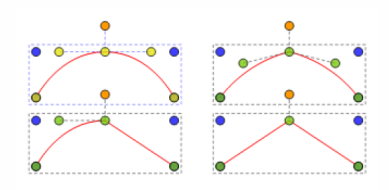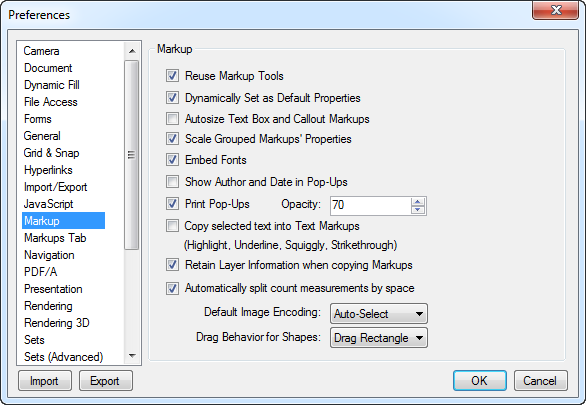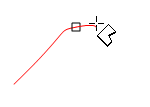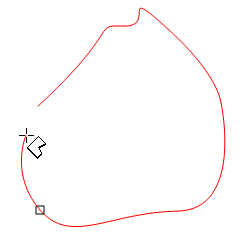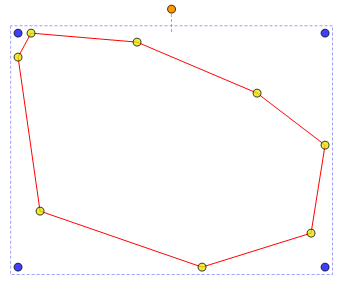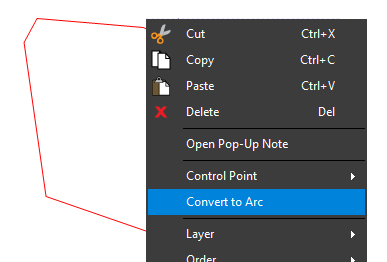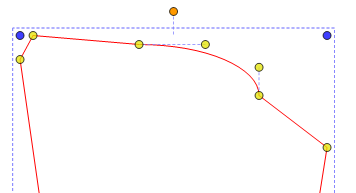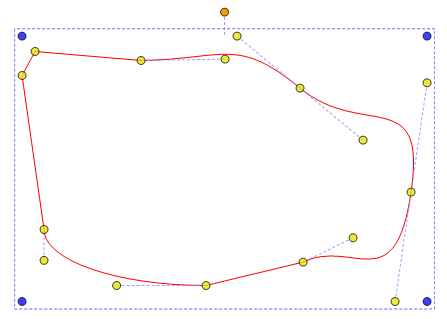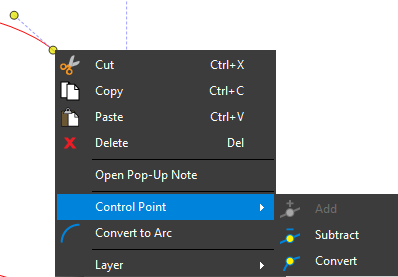Each control point that defines the markup can be turned into a Bézier curve. A single Bézier curve is defined by a start point, an end point, and two control points. These control points are shown as handlebars in Revu.
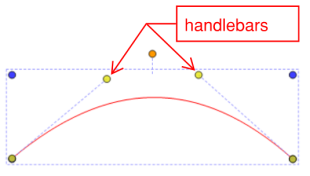
Curved segments can be chained together in order to create more complicated shapes. There are many different ways that the segments can be joined.
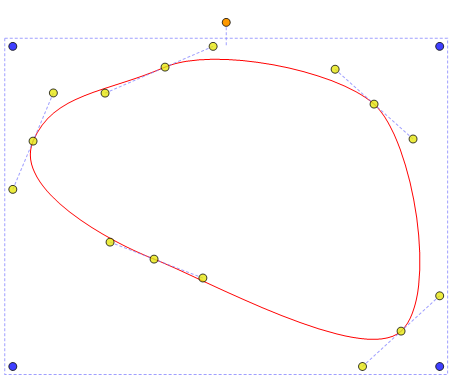
If the handlebars on either side of a point are parallel, then the curves will be connected smoothly. If the handlebars are not parallel, the curves will come to a point. A handlebar doesn't have to exist on both sides of a point; in such cases the curve is connected to a straight line segment. Connected line segments have no handlebars.
